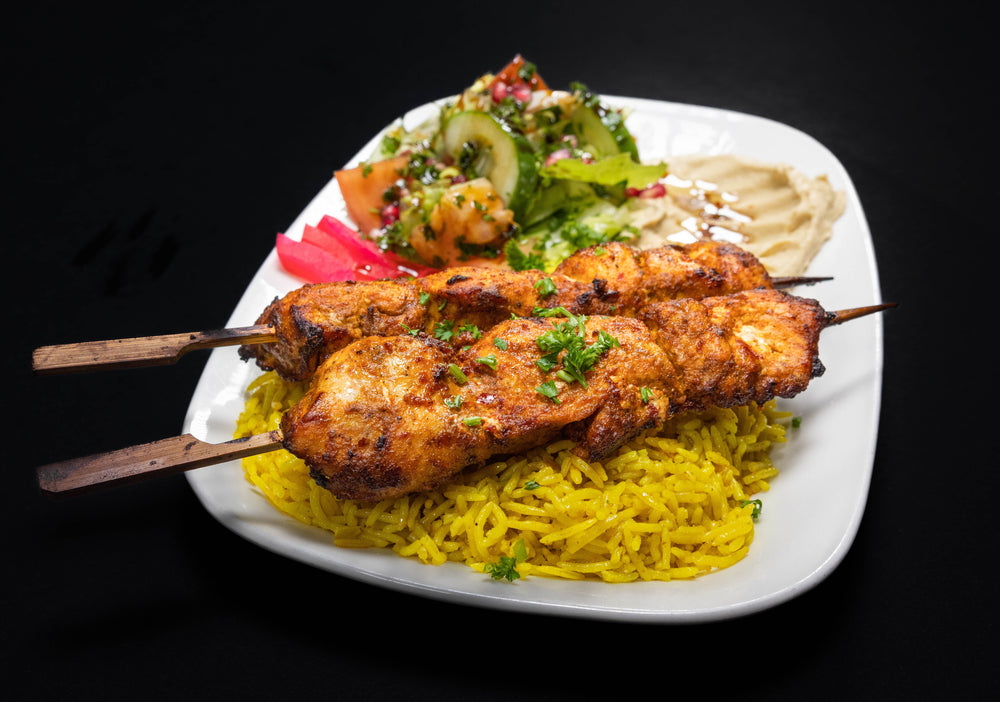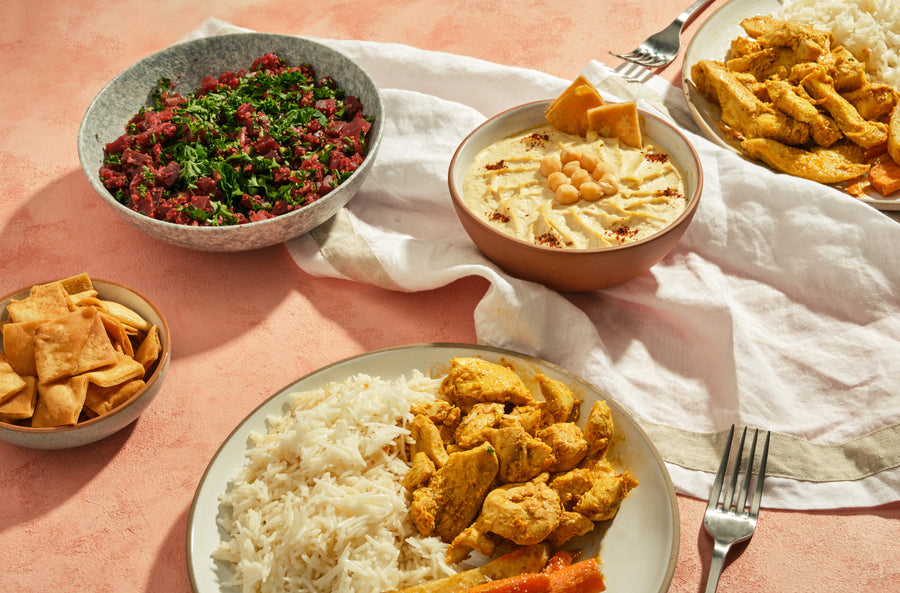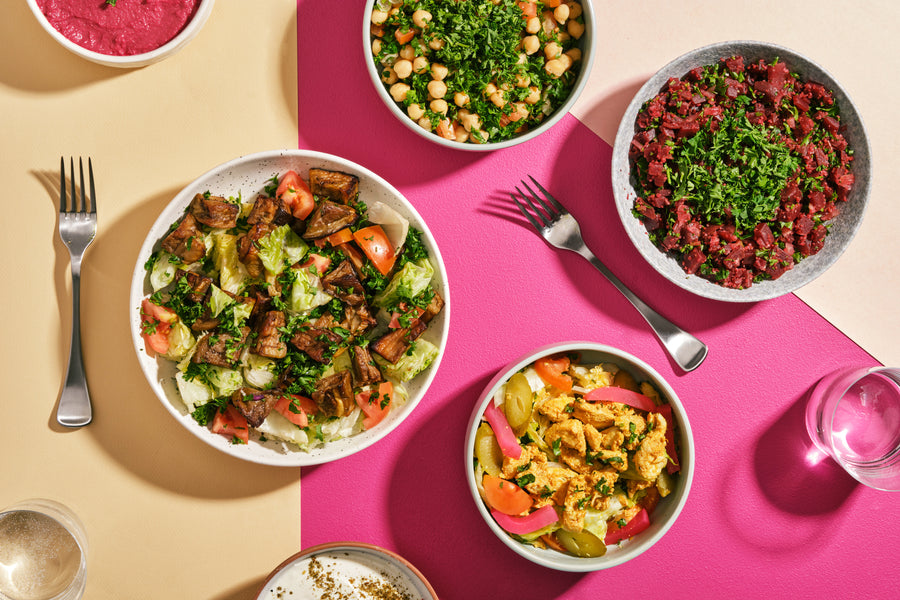Everything about the Rich Flavors and Traditions of Syrian Food: A Culinary Journey
Syrian food uses an one-of-a-kind blend of flavors and customs that show its rich cultural background. With staple active ingredients like olive oil and garlic, along with a selection of seasonings, the meals are both diverse and inviting. From the complex preparation of kibbeh to the wonderful allure of baklava, each aspect of this cooking landscape exposes deeper tales. As one discovers the significance of these flavors, a better understanding of communal dining and event arises.
The Significance of Syrian Components
The essence of Syrian components lies in their abundant diversity and ingrained social value. Influenced by the nation's different location and background, Syrian cuisine incorporates a vast range of seasonings, herbs, and fresh produce. Staples such as olive oil, garlic, and lemon give a foundation, while seasonings like cumin, sumac, and coriander include depth and complexity to dishes.The use of fresh herbs, including parsley and mint, highlights the value of seasonal ingredients. Furthermore, the area's abundant dirt yields a wealth of vegetables and fruits, such as tomatoes, pomegranates, and eggplants, which are essential to many recipes. Grains like bulgur and rice create the base of numerous dishes, emphasizing the significance of these active ingredients in Syrian society. This mix of flavors mirrors not just a cooking practice however additionally a tapestry of historic influences, making Syrian components vital to comprehending its food's vibrant character.

Iconic Cuisines of Syrian Cuisine
Syrian cuisine is renowned for its renowned recipes that showcase an abundant tapestry of structures and tastes. Standard meze plates offer a selection of tiny meals that entice the palate, while hearty primary programs provide gratifying centerpieces for meals (Afternoon Tea Vancouver). To complete the experience, a selection of delectable desserts includes a wonderful note to the culinary trip
Conventional Meze Plates

Hearty Key Courses
Hearty main dishes act as the focal point of Syrian eating, showcasing a mix of tastes that reflect the country's abundant cooking traditions. Dishes such as kebab hindi, including seasoned lamb skewers, and the renowned mujaddara, a soothing mix of lentils and rice, highlight the usage of fresh components and fragrant flavors. An additional staple is the renowned kibbeh, made from bulgur wheat and minced meat, commonly offered in various forms, including baked, deep-fried, or raw. Furthermore, the flavors of the land come active in dishes like stuffed veggies, referred to as mahshi, which are loaded with rice, meat, and natural herbs. These main courses not only please cravings but likewise inform stories of family celebrations and social heritage.
Delectable Treats Selection
A wonderful variety of desserts specifies the pleasant side of Syrian cuisine, providing an alluring end to any type of dish. Among the most well known confections are baklava, delicate layers of phyllo bread loaded with nuts and soaked in syrup, and maamoul, shortbread-like cookies commonly packed with days or nuts. Knafeh, an abundant dessert made from slim noodle-like bread saturated in syrup and layered with cheese, is a popular selection, specifically throughout cheery occasions. Additionally, the sweet and fragrant rice dessert, recognized as roz bil laban, offers a comforting finish. These delectable treats not just display the area's cooking proficiency yet likewise mirror the social heritage of Syria, making them treasured deals with in both homes and restaurants alike.
Traditional Food Preparation Methods
Modern eases have affected many culinary techniques, typical food preparation strategies stay important to Syrian cuisine. These approaches frequently stress using fresh, seasonal components and concentrate on slow-moving cooking to develop abundant tastes. Methods such as cooking, braising, and stewing are widespread, allowing the all-natural tastes of the ingredients to shine through.One noteworthy strategy is the prep work of kibbeh, a dish made from finely ground meat and bulgur. It calls for competent hand-rolling right into various shapes and can be baked, deep-fried, or served raw. Furthermore, the art of making bread, particularly pita, is central to many meals, usually prepared in a typical rock oven.Preservation methods like pickling and fermenting additionally play an important duty, boosting the variety of flavors discovered in Syrian dishes. These techniques not just reflect the area's agricultural heritage yet also cultivate a solid sense of community with shared cooking techniques.

The Function of Spices in Flavor
Flavors work as the heartbeat of Syrian food, instilling meals with complex flavors and aromatic deepness. Each seasoning plays an essential role, contributing not just to taste yet additionally to the cultural heritage of the region. Typically made use of flavors include cumin, coriander, and sumac, each supplying a distinct account that boosts traditional recipes. Cumin offers heat and earthiness, while sumac adds a tasty illumination, enhancing the overall dish.Syrian chefs usually mix spices to create harmonious profiles, mirroring the intricate equilibrium of flavors that define the food. Using spices is not simply for spices; it likewise serves to protect food and boost its nutritional worth. This thoughtful incorporation highlights visit the site a deep understanding of the cooking arts, where flavors end up being vital writers, communicating the rich history and diverse influences that characterize Syrian gastronomy. Inevitably, spices are essential in crafting memorable and authentic Syrian recipes.
Festive customs and celebratory dishes
Congratulatory meals in Syrian cuisine are noted Learn More by conventional feast meals that reflect the nation's abundant culinary heritage. Unique celebrations often entail special rituals that improve the common experience of dining. These customs not just honor the importance of the occasions however additionally reinforce social and familial bonds.
Traditional Feast Dishes
When family members gather to commemorate significant celebrations in Syria, traditional banquet dishes take facility phase, showcasing the rich cooking heritage of the region. These gatherings typically feature vivid plates of mezze, including hummus, baba ghanoush, and tabbouleh, which offer as fascinating starters. The main dish normally highlights lamb or chicken, marinaded and prepared to excellence, often come with by fragrant rice pilaf or bulgur. One of one of the most beloved meals is maqlooba, a split rice dish with veggies and meat, flipped upside down prior to offering. Sweets additionally play a critical function, with baklava and knafeh providing a sweet coating to the meal. Each dish not just delights the palate but also shows the deep-rooted customs and public spirit of Syrian society.
Unique Occasion Routines
Special occasions in Syria are marked by rich routines that intertwine food and festivity, showing the cultural significance of communal events. Commemorative dishes often consist of typical meals such as kibbeh, tabbouleh, and various barbequed meats, prepared with treatment and shared among friends and family. During spiritual vacations like Eid al-Fitr and Eid al-Adha, households collaborated to prepare unique sweets like maamoul, signifying unity and happiness. Wedding celebrations are especially sophisticated, featuring multiple courses and vivid displays of friendliness. These events are not just regarding food; they include narration, music, and dancing, strengthening social bonds and cultural heritage. Through these routines, Syrians commemorate life's milestones, making sure practices are passed down through generations, enhancing their cooking landscape.
The Relevance of Sharing and Community
Sharing meals is an essential aspect of Syrian society, mirroring the deep-rooted values of community and connection. In investigate this site Syria, food is not just nourishment but a means of bringing individuals with each other. Buddies and households gather around the table to enjoy traditional meals, promoting bonds and developing enduring memories. This public eating experience highlights friendliness, where hosts go to excellent sizes to assure every visitor really feels invited and nourished.The act of sharing food likewise symbolizes kindness and uniformity, enhancing social connections within areas and larger areas. During celebrations, it is typical for people to serve each various other, showcasing a spirit of togetherness that transcends individualism. Events, whether big or small, are usually marked by the sharing of dishes, where diverse flavors and recipes come together, mirroring the abundant tapestry of Syrian society. Accordingly, the value of sharing and community in Syrian cuisine is not just a culinary custom however an essential social method.
A Cooking Expedition of Syrian Sweets
Although typically outweighed by mouthwatering meals, Syrian sugary foods hold a treasured area in the nation's cooking heritage. These confections reflect the region's abundant background, blending tastes and strategies from numerous societies. Conventional desserts like baklava, with its layers of phyllo pastry, nuts, and honey syrup, showcase the creativity entailed in Syrian cooking. Ma'amoul, a shortbread-like cookie loaded with nuts or days, is often prepared for joyful celebrations, signifying hospitality and celebration.Another cherished wonderful is Knafeh, a pastry saturated in syrup and split with cheese or cream, using a wonderful comparison of textures. Syrians additionally enjoy a selection of fruit protects and syrups, frequently served with tea or as part of a bigger spread throughout gatherings. These desserts not just please the taste buds however likewise serve as a bridge between generations, protecting the traditions and tales of Syrian culture via each delightful bite
Frequently Asked Questions
What Are the Health And Wellness Conveniences of Typical Syrian Foods?
The wellness benefits of typical Syrian foods consist of rich nutrients from fresh vegetables, legumes, and whole grains. These components advertise heart wellness, boost food digestion, and supply crucial vitamins, contributing to general wellness and a well balanced diet plan.
Just How Has Syrian Cuisine Developed Over the Years?
Syrian food has actually developed substantially, influenced by historical profession routes, cultural exchanges, and local schedule of active ingredients. Standard recipes have incorporated contemporary tastes and strategies while maintaining their abundant heritage, mirroring a varied culinary landscape.
Are There Vegetarian or Vegan Options in Syrian Cuisine?
Syrian cuisine uses countless vegetarian and vegan alternatives, featuring dishes like falafel, tabbouleh, and stuffed grape leaves. These meals highlight the region's abundant agricultural heritage, showcasing fresh veggies, grains, and aromatic flavors in vibrant combinations.
What Beverages Set Well With Syrian Recipes?
When taking into consideration beverages that match Syrian meals, one might discover that mint tea, ayran, and pomegranate juice improve the meal's flavors. Additionally, red white wine usually sets well with the spices commonly found in these foods.
Just How Can I Recreate Syrian Dishes at Home?
To recreate Syrian meals at home, one need to discover genuine dishes, gather standard active ingredients, and use food preparation techniques special to the cuisine. Try out spices and discussion additionally boosts the total eating experience. Syrian cuisine is renowned for its legendary recipes that display a rich tapestry of textures and flavors. Spices offer as the heart beat of Syrian cuisine, infusing recipes with intricate tastes and fragrant deepness. Commemorative meals in Syrian food are noted by standard feast meals that reflect the nation's abundant culinary heritage. Celebrations, whether tiny or huge, are commonly marked by the sharing of dishes, where varied flavors and dishes come together, mirroring the rich tapestry of Syrian culture. Syrian cuisine offers many vegan and vegan alternatives, featuring recipes like falafel, tabbouleh, and packed grape fallen leaves.
Comments on “The Ultimate Wedding Catering Checklist for Couples Who Crave Authenticity”